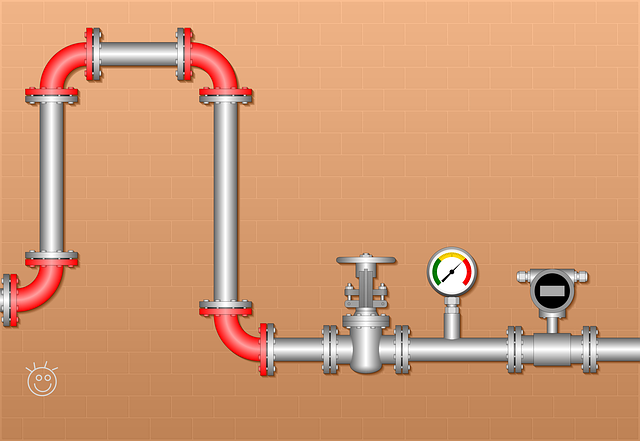Foundation cracks require immediate attention as they indicate structural problems. Conducting a Foundation Inspection is crucial to identify crack types, severity, and root causes like soil settlement or water damage. This process guides selection of repair methods such as epoxy injection for small cracks or structural jacking for larger ones. Choosing a reputable contractor with a detailed warranty ensures quality repairs and peace of mind. Regular inspections and proper maintenance after repairs are essential to prevent future issues and extend the lifespan of crack fixes.
Foundation cracks can be unsettling, but understanding their causes and severity is key to effective repair. This comprehensive guide delves into every aspect of foundation crack repair, from identifying patterns to choosing the right professional. We explore popular methods like epoxy injection and structural jacking, emphasizing the vital role of a thorough foundation inspection before any repairs. Learn how to ensure quality work with a solid warranty and maintain your foundation for years to come.
Understanding Foundation Cracks: Causes and Types

Foundation cracks can be a concerning issue for any homeowner, but understanding their causes and types is the first step in effective repair. These cracks may appear as hairline fractures or wider gaps, and they can form due to various factors, including settlement, differential drying, and movement from tree roots. Settlement occurs when the soil beneath the foundation compacts, often caused by heavy rainfall or nearby construction activities. Differential drying refers to unequal moisture levels in the soil, leading to shrinkage and crack formation. Tree roots seeking water can also exert pressure on the foundation walls, causing cracks to appear.
A thorough foundation inspection is crucial to identifying these cracks and determining their severity. During an inspection, professionals assess the type and pattern of cracks, considering factors like their orientation, width, and the presence of any visible movement. This information helps in selecting the most appropriate repair method, ensuring that the issue is addressed effectively and that your home’s structural integrity is maintained.
The Importance of Foundation Inspection Before Repair

Before undertaking any crack repair, a thorough foundation inspection is paramount. This critical step ensures that the root cause of the cracks is accurately identified, preventing future damage and costly repairs. Foundation inspections involve assessing the overall structural integrity of your home, examining signs of settlement, water damage, or other issues that could contribute to cracks.
Professional inspectors use advanced tools and techniques to detect even the slightest anomalies, providing homeowners with a comprehensive report detailing the scope of the problem. This information is crucial for selecting the most effective repair method and ensuring long-lasting results. By addressing foundation issues early, you not only save money but also protect your home’s structural value and safety.
Identifying Crack Patterns and Severity

Identifying crack patterns is a crucial step in any foundation repair process, especially when offering a warranty. During a thorough foundation inspection, professionals look for various types of cracks that can indicate different issues. These include hairline cracks, which are usually minor and may result from normal concrete shrinkage; diagonal cracks suggest movement or settlement and could be more serious; vertical cracks often signal significant structural problems; and horizontal cracks at the ground level are a clear sign of significant foundation damage.
The severity of these cracks is assessed based on their width, length, depth, and frequency across the foundation. Widely spaced, shallow cracks might only require routine maintenance, while closely packed, deep cracks could indicate serious structural instability. A detailed analysis by experienced inspectors ensures that repairs are tailored to the specific needs of the foundation, maximizing the effectiveness of crack repair solutions and the longevity of the warranty.
Repair Methods: Epoxy Injection vs. Structural Jacking

When it comes to repairing foundation cracks, two popular methods are epoxy injection and structural jacking. Epoxy injection is a quick and effective way to fill small to medium-sized cracks. This method involves mixing a two-part epoxy and injecting it into the crack using a low-pressure pump. Once cured, the epoxy hardens and strengthens the surrounding foundation, preventing further damage. It’s ideal for non-structural cracks that don’t compromise the overall stability of the building.
On the other hand, structural jacking is a more intensive process suitable for larger or structural cracks. This technique utilizes hydraulic jacks to lift and adjust the affected section of the foundation until it aligns properly with the adjacent concrete. Once levelled, a filler material like concrete or mortar is applied to fill the gap. Structural jacking addresses the root cause of the crack by realigning the foundation, ensuring long-term stability. A thorough foundation inspection is crucial to determine which method is best for any given crack repair.
Choosing the Right Professional for Crack Repair

Choosing the right professional for foundation crack repair is crucial as it directly impacts the durability and aesthetics of your property. It’s essential to opt for a company that offers comprehensive services, from initial inspection to long-term maintenance. A thorough foundation inspection should be the first step; this involves assessing the extent of the damage, identifying the cause, and providing a detailed estimate for repair.
When selecting a contractor, look for expertise in handling various crack types and their underlying causes. A professional who can offer warranties on their work is a sure sign of confidence in the repair’s longevity. Additionally, checking references and reviews from previous clients can provide valuable insights into the contractor’s reliability and quality of service.
Ensuring Quality and Warranty in Foundation Repairs

When it comes to foundation crack repair, ensuring quality and a solid warranty is paramount. A comprehensive foundation inspection is the first step in this process. Skilled professionals use advanced techniques and tools to assess the extent of damage, identifying cracks, settlement issues, and other structural problems. This meticulous inspection allows for tailored solutions, addressing not just visible cracks but also underlying causes.
Choosing a reputable contractor offering a detailed warranty is crucial. A quality warranty assures homeowners that their investment is protected against future issues related to repair work. It provides peace of mind, knowing that any defects or substandard workmanship will be addressed without additional costs. This level of assurance is essential for such critical infrastructure as foundations, ensuring long-term stability and safety.
Post-Repair Maintenance: Extending the Lifespan of Your Foundation

After repairing cracks in your foundation, proper maintenance is key to extending the lifespan of the repair and ensuring your home’s structural integrity. Regular inspections are a crucial part of this process; a qualified professional should assess the repaired area every few months to detect any new cracks or signs of movement. This proactive approach allows for early intervention, preventing minor issues from becoming major problems.
In between inspections, homeowners can take simple steps to maintain their foundation. This includes controlling moisture levels around the perimeter of the house, ensuring proper drainage, and avoiding excessive tree root growth near the foundation. By implementing these measures, you’ll contribute to a longer-lasting repair, saving you time and money in the long run.
Common Misconceptions About Foundation Crack Repair

Many homeowners often have misconceptions about foundation crack repair, which can lead to delays in addressing this critical issue. One common misunderstanding is that minor cracks don’t require immediate attention. However, even small fractures in a foundation wall can indicate more significant structural problems and potential future damage. Ignoring these signs might result in costly repairs later on.
Another misconception is that repairing foundation cracks is an arduous and expensive process. While some cases may indeed involve extensive work, modern techniques offer efficient and affordable solutions. Regular foundation inspections are key to dispelling these myths. By hiring professionals for a thorough assessment, homeowners can gain insights into the extent of the damage and choose from various repair methods, ensuring long-lasting results with warranties.
